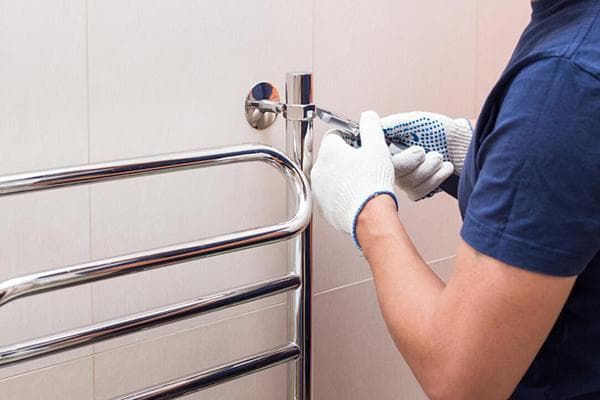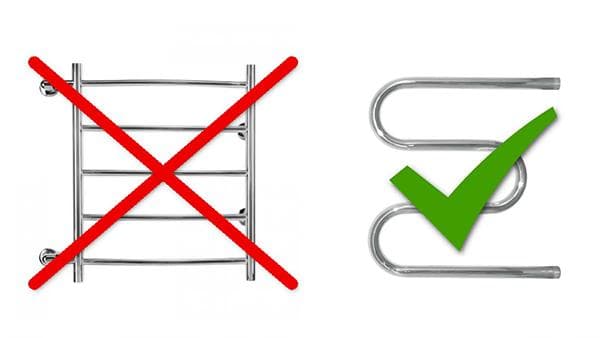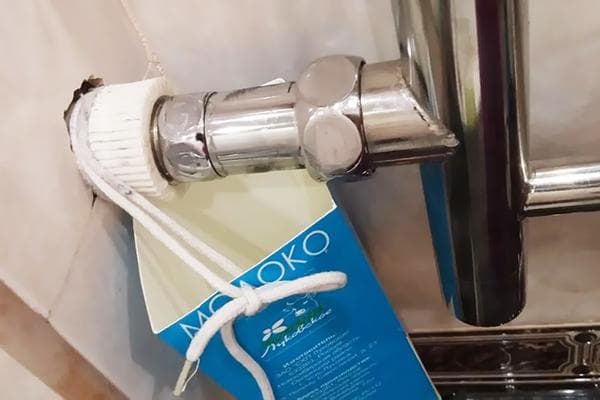How not to flood your neighbors after installing a heated towel rail: common causes of leaks and tips for eliminating them
If indignant neighbors knock on your door and claim that you are flooding them, and you remember exactly that you turned off all the taps, then there is a high probability that your heated towel rail is leaking. In this case, it would be correct to shut off access to hot water to this device and call a plumber who will figure out the cause of the breakdown. However, in most cases it is easier to prevent an accident than to eliminate its consequences. And if you have direct hands, you can repair the heated towel rail yourself - today we will tell you how to do this.

Choosing a reliable heated towel rail
Often, a heated towel rail is perceived simply as part of the interior - they choose it based only on cost and appearance. And this becomes the main mistake. The cheapest products are usually made in China from low-quality materials. Their service life is 2–3 years, and after this time, corrosion appears in the places where the tubes are connected to each other.
To avoid leaks:
- If possible, purchase heated towel rails from domestic or European brands - by overpaying 3-4 thousand now, you will save up to 30-40 thousand in the future.
- Give preference to models made from a single curved tube (the so-called m-shaped, u-shaped and e-shaped coils).They look less attractive than ladders, trapezoids, arches and other intricate shapes, but they do not have joints inside the structure. This means that the likelihood that they can leak is reduced significantly.
- Pay attention to the metal from which the pipe is made. It’s good if it’s stainless steel - such a heated towel rail will faithfully serve you for decades. Copper, brass and aluminum products will be quite reliable. But ordinary steel coated with a layer of chromium or nickel should be avoided. Although decorative coating protects the metal from rust, it wears out very quickly. The steel remains defenseless, and the device quickly becomes unusable from constant contact with moisture.
The heated towel rail is leaking: procedure
If, upon entering the bathroom, you find that the heated towel rail is leaking, first of all, turn off the valve on the hot water pipe that is connected to it. This will help minimize the damage from an accident. However, this device should not be left idle for a long time, because it acts as an air dehumidifier, and due to increased humidity, mold may form on the ceiling and walls.
Next, try to understand where exactly the water is dripping from. Most often, a leak is detected at the junction of the pipes that make up the heated towel rail itself, or at the points where it is connected to the water supply or at the swivel joints. In the first case, there are no options - you will have to buy a new device. But in the second, it is enough to eliminate the cause of the malfunction.
If you have at least minimal skills in working with plumbing devices and have a set of tools at home, proceed as follows:
- Remove the heated towel rail.
- Inspect the area where water is leaking.
- Determine the cause of the leak. Most often, the silicone gasket is the “culprit” - replace it with a new one, preferably made of rubber. If the junction with polypropylene pipes leaks, warm it up with a hair dryer, and put a clamp of a suitable diameter on top and tighten it tightly.
Unobvious causes of leaks
It is sometimes difficult for a person who is not well versed in plumbing to determine what exactly led to the breakdown of the heated towel rail. That is, he knows the place where water leaks out, he knows how to fix the problem, but he cannot understand why the accident occurred. However, in order to ensure that this nuisance does not recur in the apartment several months or years later, this reason must be established.
If the heated towel rail is rusty, then a number of factors could lead to this:
- Manufacturing defects. In the process of bending pipes, they can be damaged. Microcracks formed in the metal are invisible at first and do not appear in any way during operation. But over time, the rule “where it’s thin, it breaks” comes into play - corrosion appears in these microcracks, which over time covers the undamaged sections of the pipe. During the warranty period, such a heated towel rail can be returned to the seller and demand a refund or replacement with a similar but working device.
- Stray currents. The reason for their appearance is the lack of grounding. Moreover, both the heated towel rail itself and electrical appliances connected to the water supply - a washing machine, an electromagnetic filter, a pump - can be ungrounded.It is easy to understand that corrosion appeared precisely because of stray currents - in this case it manifests itself in the form of tiny dots, which increase in size over time, and then completely turn into holes in the metal.
If a leak has formed at the junction with polypropylene pipes, you should take a closer look at couplings with union nuts (popularly called American ones).
There are several types of such couplings, and the most reliable of them can be considered conical. The rest consist of several circuits with sealing rubber bands. Due to imperfections in the design, when tightening the outer nut with a hex wrench, the inner nut unscrews. It is not difficult to avoid this - during the installation process, you should secure the inside of the “American” with anaerobic sealant, and after its polymerization, tighten the outer gasket with a nut.
Now you know what to do to fix a leak if the heated towel rail fails, and you can choose a reliable and high-quality device that will faithfully serve you for 10, or even 20 years. Don't skimp on plumbing and choose wisely - this significantly reduces the risk that you will have to pay your neighbors for repairs after a flood or rebuild your own bathroom.

